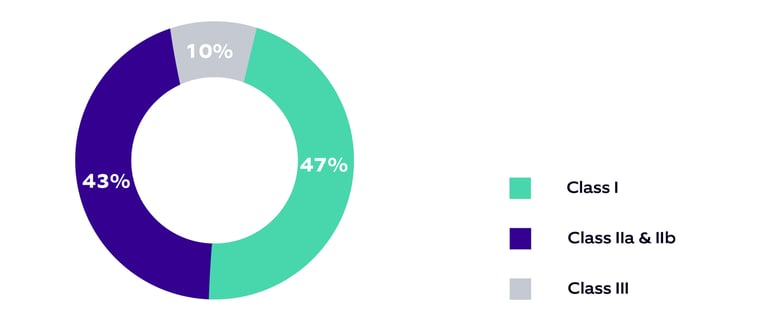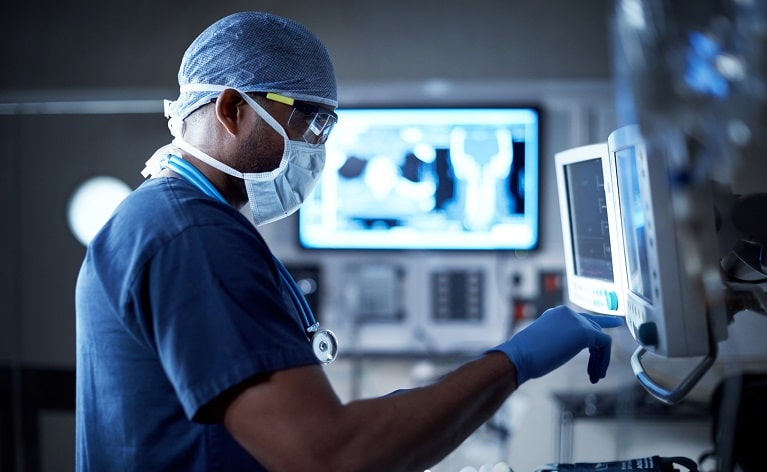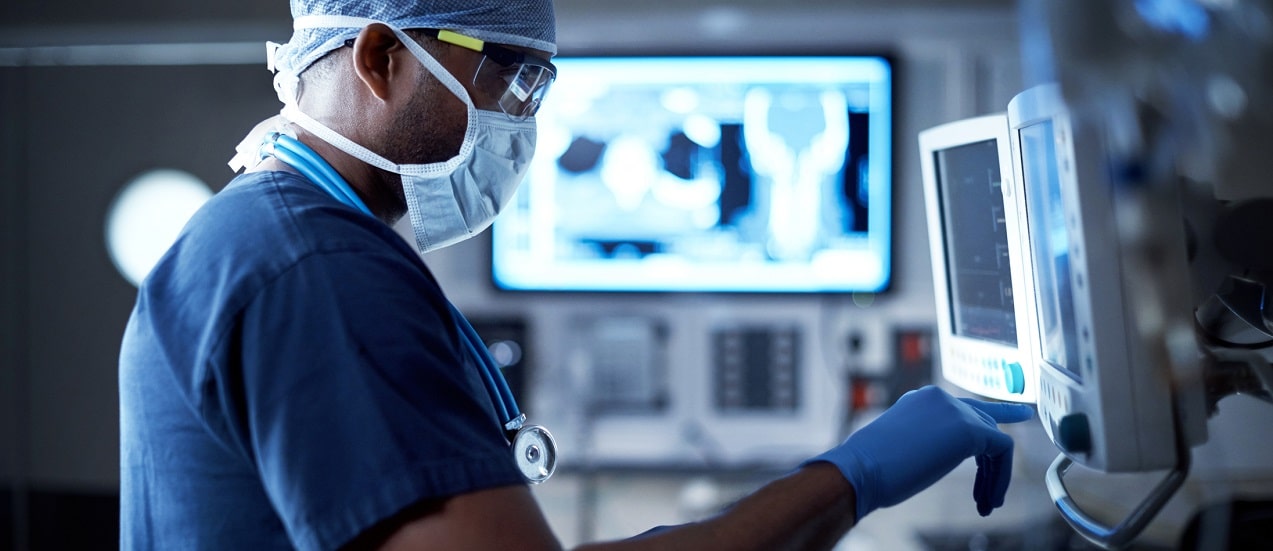The medical device sector is undergoing a significant transformation. Technological advancements are boosting the number of medical devices in the market and expanding their role in healthcare. The compound annual growth rate (CAGR) of the global market for medical device technology from 2022 to 2027 is 4.9%. It is expected to expand from $465.5 billion in 2022 to $591.3 billion in 2027.
Beyond 2022, the global medical device market will be marked by a rise in the frequency of chronic diseases and a growing geriatric population. This leads to increased use of technologically advanced devices for early disease detection and the development of automated systems. Percentage of device presence in the US (as classified by US FDA). In-vitro diagnostics emerged as the largest segment in the year 2022 (medical devices are classified under different sub-sectors based on their product type, application, and technology risk).
Percentage of device presence in the US (as classified by US FDA). In-vitro diagnostics emerged as the largest segment in the year 2022 (medical devices are classified under different sub-sectors based on their product type, application, and technology risk).
Our report includes an in-depth analysis of the medical device market, market forecasts, and trends for 2022 and beyond. We will also cover medical device classification, market share by segmentation, market dynamics, and key trends. A review of the major players' product portfolios, recent developments, high-level industry trends, opportunities, and challenges in the medical device sector will also be included.
Key trends in the medical device sector
Here are some of the major trends impacting the medical device market:
.jpg?width=2250&name=GM%20Blog02%20(1).jpg)
- Internet of Medical Things (IoMT) is modernizing healthcare
The IoMT market is predicted to rise by 28%, to reach $285.5 billion by 2029. Medical gadgets that collect data and create alliances with IoMT systems are being driven by significant advancements in new technologies such as smart sensors, smart gadgets, and other lightweight communication devices. These innovations are assisting healthcare companies in improving patient outcomes, lowering costs, and increasing efficiency. - Medical device integration is enhancing healthcare at home
Medical devices (such as glucose monitors, insulin delivery systems, nebulizers, and oxygen concentrators) are increasingly being used at home to diagnose and treat medical disorders. These devices are integrated with the patient's EMR, wearables, cell phones, and telehealth platforms to provide critical insights for enhanced clinical and operational decision-making. - Blockchain technology is revolutionizing the medical device industry
Studies show that 40% of patients are willing to share their personal information when data is collected for medical research purposes. Digital ledger technology (DLT), more popularly known as blockchain, has improved the privacy of data sharing across a large network of device users and has gained traction across the medical device value chain. - Robotics is changing the face of healthcare
Robotic surgeries have gained momentum in recent years, with multiple new device launches and approvals. According to a study published in JAMA, robot-assisted surgeries accounted for 15.1% of all general surgeries in 2018, up from 1.8% in 2012. Amidst the COVID-19 pandemic, using robots as a shielding layer helped physically isolate the healthcare worker (HCW) from the patient. This is an effective technique to combat the risk of contamination and maintain surgical volumes. - Additive manufacturing/3D bioprinting is gaining steam
Additive manufacturing (also known as 3D printing) was priced at $1.1 Bn in 2019. It is expected to hit up to $4 Bn by 2027. During the COVID-19 pandemic, 3D printing saw a surge in demand in healthcare, owing to supply chain disruptions and the need to produce more PPE kits, research material, and medical devices to fight the disease.
Major challenges impeding the growth of the medical device sector
Let's look at some of the most significant market restraints the medical device industry faces:
- Before getting a license and certification, most medical devices must undergo various pre- and post-market clinical trials. As the COVID-19 pandemic continues, the industry is still struggling to make informed decisions about the supply chain, general markets, regulatory duties, and the fight against counterfeit medical devices.
- The pressure to reduce medical device prices is another key concern. Before launching a product in the market, numerous costs, such as rent, expenses on labor and materials, etc., are incurred, which must be considered by manufacturers. All these costs determine the overall price of the device.
- Cybersecurity risk remains a major concern for the industry. Digitalization technologies such as AI and robotics have overhauled the healthcare industry. However, these technological innovations have also paved the way for cyber threats. Hackers can gain access to medical devices and tamper with them through a security breach.
- Consumer requirements are changing continuously. This means traditional MedTech companies should rethink enhancing the customer experience.
- The growing interest of technology giants in medical devices may hamper the market share of existing players. Many start-ups are imposing continuous innovation pressure on med-tech giants.
- Medical devices must fulfill regulatory requirements to maintain productivity. However, regulatory restrictions are complex enough to jeopardize the public availability of particular medical equipment. In the long run, this impacts the healthcare industry, making it more challenging to provide quality assistance during medical emergencies. On the other hand, less complex regulations support the growth of local innovators, evolving as a competitor for larger players.
The medical device business model is transforming with digital disruption
The digital revolution has put the medical device sector at the forefront. This change is driving massive investments in medical devices across the spectrum, whether as an accessory, software as a medical device (SaMD), or while connecting to other devices in a specific ecosystem. This is reflected in the following:
- Moving closer to consumers. Smartphones are connecting directly with patients and consumers, bypassing other value chain players.
- Medical devices are converting into disease management platforms, streamlining patient treatment pathways.
- The focus is shifting towards services and analytics to improve patient outcomes.
Would you like to know more about the following?
- Recent regulatory insights from the medical device industry
- How medical device companies are addressing some of the critical industry challenges through tech innovations
- Important industry developments and company profiling of major players
- How medical devices function as a consumer health enabler
- Key insights from the global software as a medical device (SaMD) market
- Significant trends, opportunities, and regulatory requirements impacting the SaMD market
Download our report and get more insights from the medical device market.






